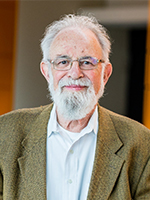
Giant Magneto-Impedance ● Thermodynamics ● Semiconductors
Arthur Yelon is Emeritus Professor of Engineering Physics.
Professor Yelon has had a long and prolific career in research, including more than 40 years at Polytechnique Montréal. He has worked for many years in the areas of semiconductor thin films, magnetic micro- and nanowires, and giant magnetoimpedance (GMI).
high-activation-energy kinetics
Recently, he has redirected his research interests toward high-activation-energy kinetics, an emerging field that has been little explored as of yet. Characterizations, answers to questions and indeed questions themselves are rare in the current literature, despite the fact that they are frequent in a wide range of scientific disciplines.
One important example of high-activation-energy phenomena is chemical reactions that fail to occur, or are delayed, under “normal” conditions, but which are greatly accelerated by catalysts. Under such circumstances, the barrier that prevents or delays the reaction is lowered by an effect of entropy.
Generally speaking, the models that Professor Yelon works with are thermodynamic in nature—in other words, macroscopic—but they often have links to microscopic models, shedding light on mechanisms at the atomic and molecular levels.
Among other achievements, Professor Yelon and his collaborators have proposed an explanation for experimental observations of what physicians call the Meyer-Neldel Rule (MNR), chemists term the isokinetic relationship (IKR), and biologists refer to as the compensation law. These observations are made when the activation energy is greater than the available thermal energy and excitation energy. At very low temperatures, this is measured in a large fraction of one electron-volt, or more.
Current studies of high-activation-energy kinetics are focused on, notably, organic and amorphous semi-conductors (such as silicon). Professor Yelon maintains collaborations with other department professors, including Edward Sacher, Clara Santato and David Ménard.


